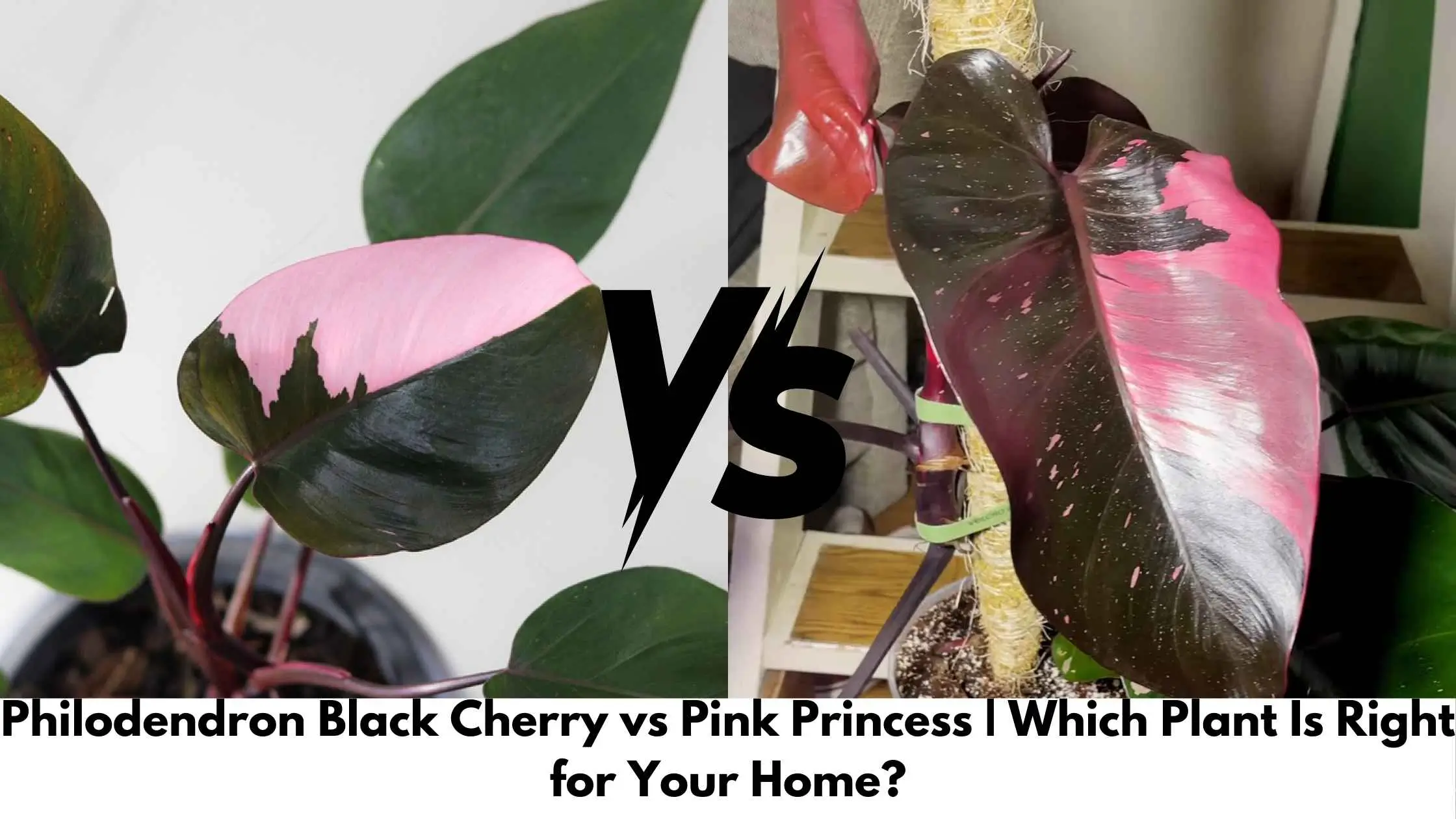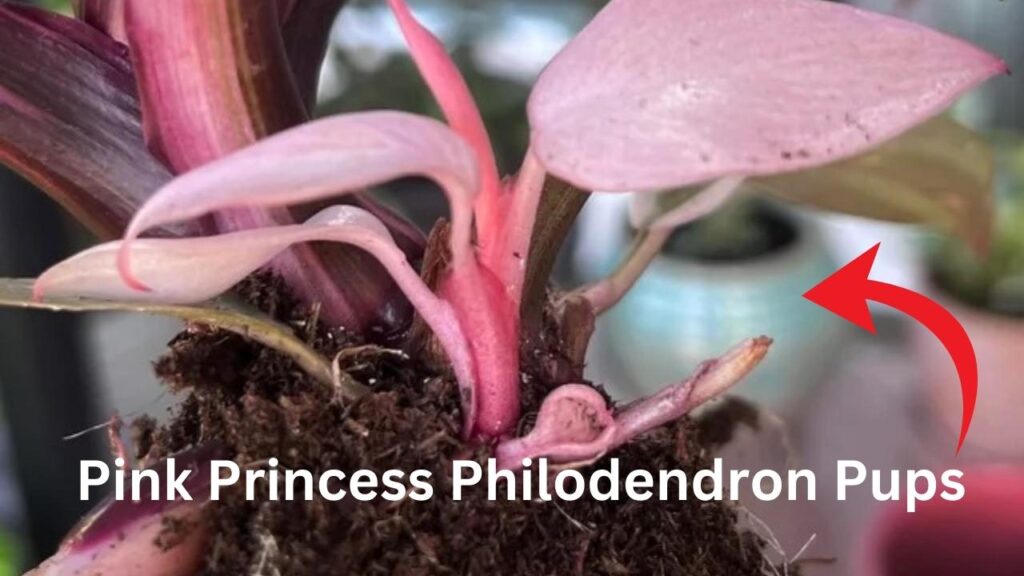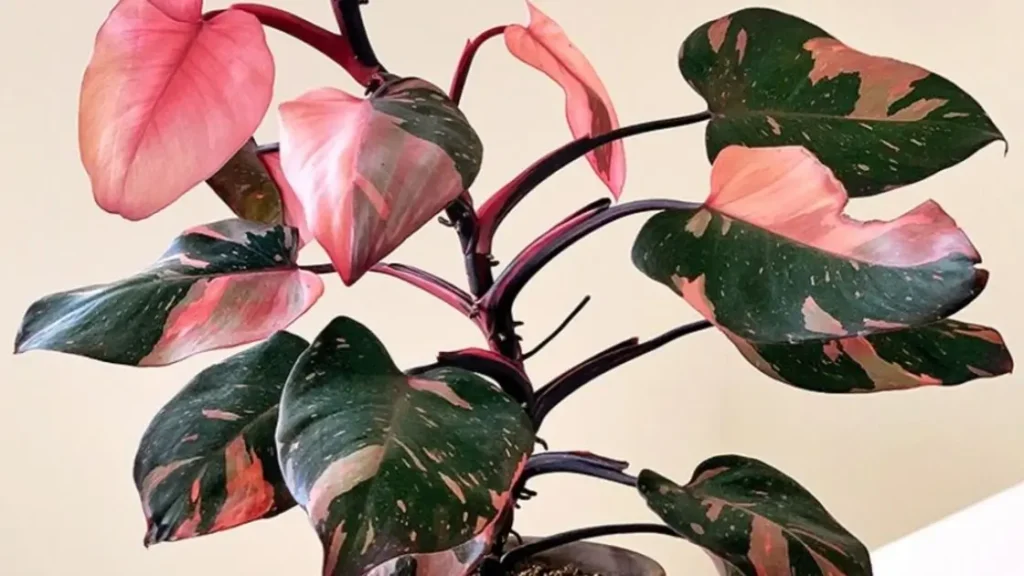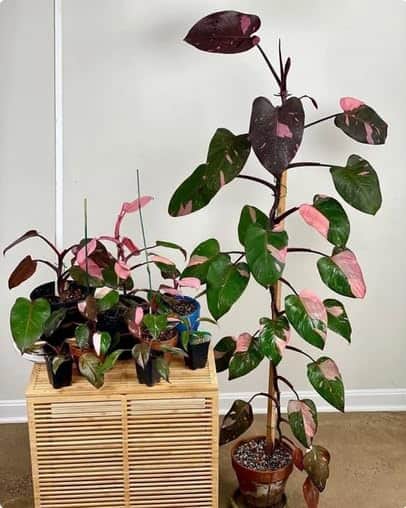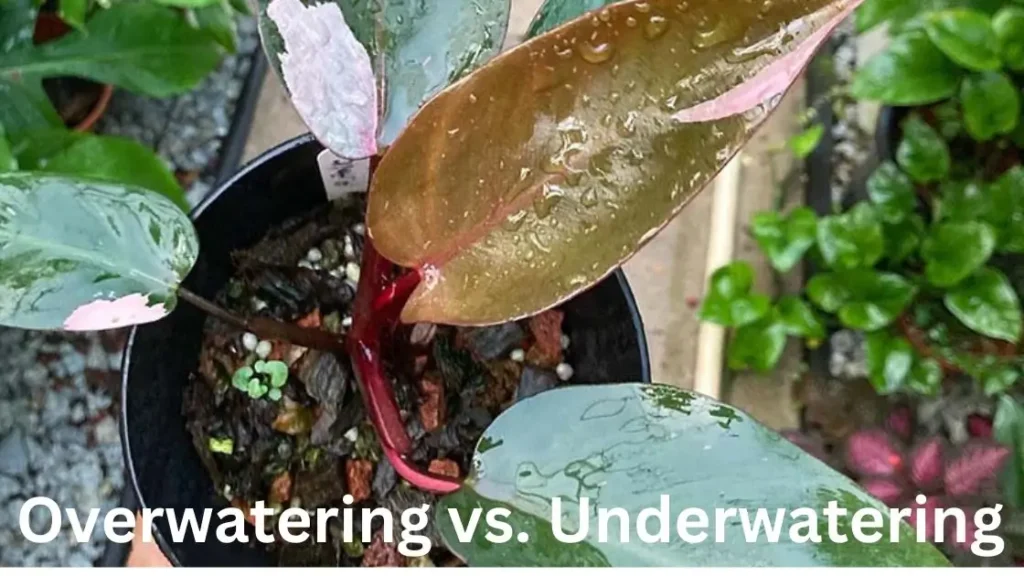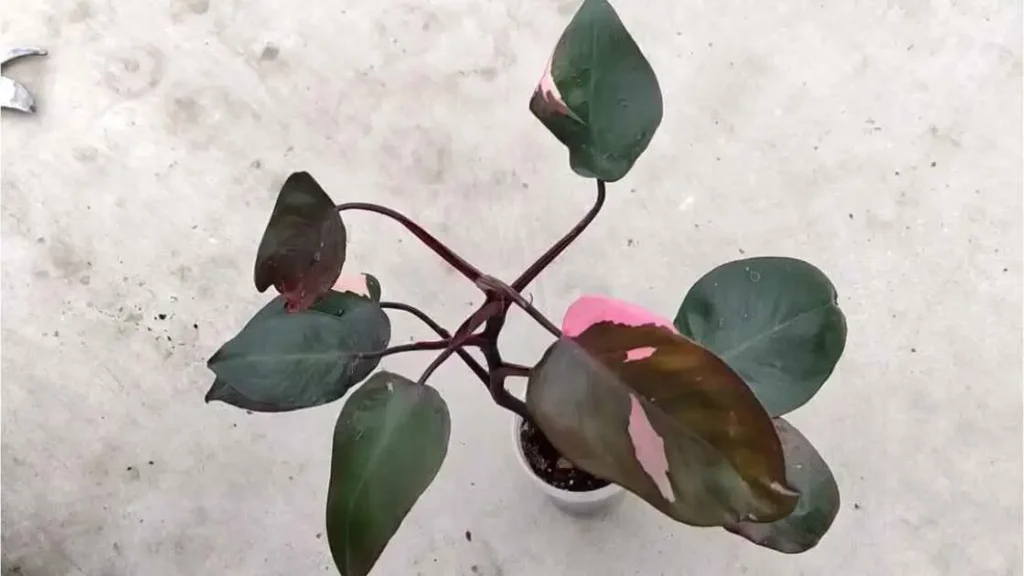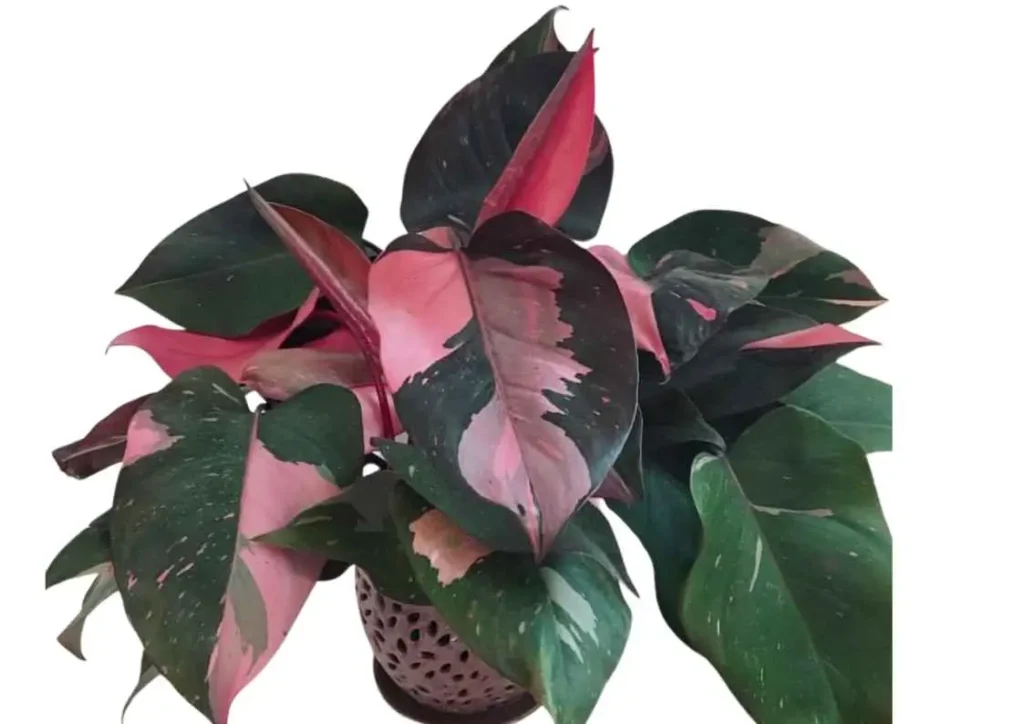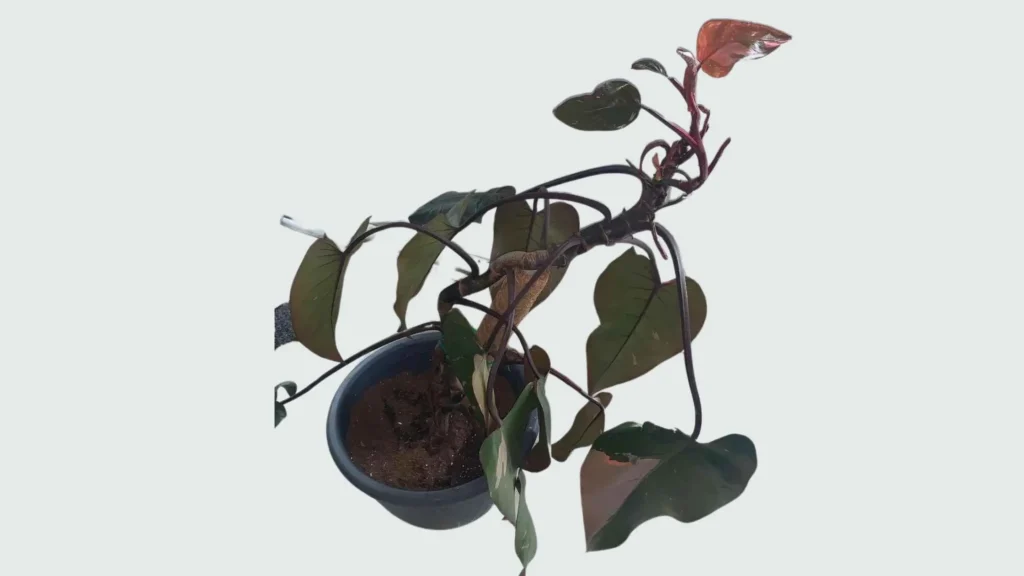Table of Contents
ToggleHouseplants can really bring life to your home, and some plants stand out more than others. The Philodendron Black Cherry and Pink Princess are two popular choices known for their unique and eye-catching looks. But how do you choose between them?
In this guide, we’ll break down the differences between these two plants, show you how to care for them, and give you tips to keep them healthy. Whether you like the dark, dramatic look of the Black Cherry or the bright, playful vibe of the Pink Princess, this article will help you decide which one is perfect for your home.
Overview of Philodendron Black Cherry
Let’s talk about the Philodendron Black Cherry. The first time I saw it, I was struck by its dark, almost black leaves with a hint of maroon. This plant isn’t your everyday houseplant; it’s a real eye-catcher. The deep, rich color of the Black Cherry’s leaves brings a touch of mystery and drama to any space.
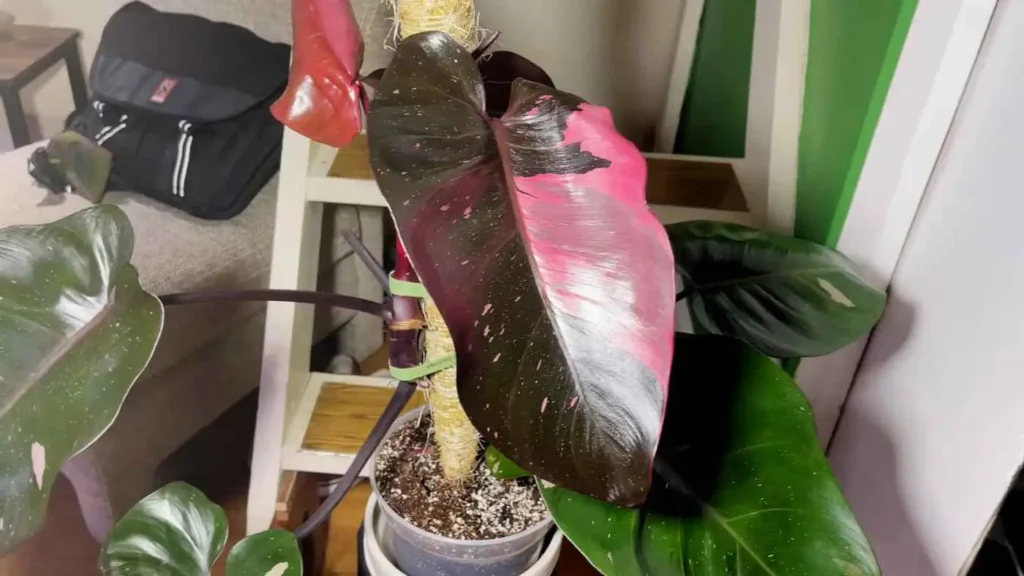
Taking care of a Philodendron Black Cherry is pretty easy. It likes medium to bright indirect light, so placing it near a window is great, as long as it’s not in direct sunlight. Be careful not to overwater it—let the top inch of soil dry out before you water it again. To keep those dark leaves looking their best, aim to keep the humidity around 60%.
Overview of Philodendron Pink Princess
Now, let’s talk about the Philodendron Pink Princess. This plant has become a star in the plant world, and it’s easy to see why. Its pink and green leaves are absolutely stunning. I still remember the thrill of getting my first Pink Princess—it felt like bringing a piece of living art into my home.
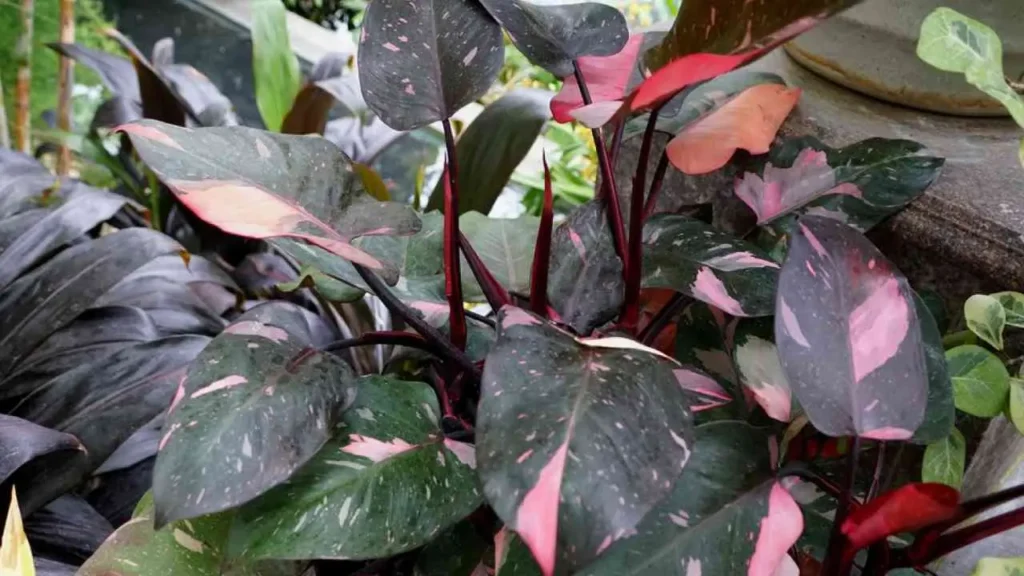
But, the Philodendron Pink Princess can be a bit demanding. It has some specific needs, especially when it comes to light. To keep that gorgeous pink color, you’ll need to give it plenty of bright, indirect sunlight. If it doesn’t get enough light, the leaves might turn back to green. Watering also needs careful attention—just like the Black Cherry, the Pink Princess doesn’t like being overwatered. And this plant loves humidity, so if your home is on the dry side, especially in winter, think about misting it regularly or using a humidifier to keep it happy.
Key Differences Between Black Cherry and Pink Princess
Let’s break down the key differences between these two striking plants.
Key Differences Between Philodendron Black Cherry and Pink Princess
| Feature | Philodendron Black Cherry | Philodendron Pink Princess |
| Leaf Color | Dark maroon to almost black | Variegated with pink and green |
| Variegation | Subtle, dark hues with minimal variegation | Highly variegated with striking pink patches |
| Growth Habit | Slightly larger, broader leaves | Compact growth, slightly smaller leaves |
| Light Requirements | Medium to bright indirect light | Bright indirect light, more sensitive to low light |
| Watering Needs | Allow top inch of soil to dry before watering | Allow top inch of soil to dry before watering, but avoid drying out completely |
| Humidity Preference | High humidity, around 60% | High humidity, essential to maintain variegation |
| Care Difficulty | Moderate, relatively forgiving | More demanding, particularly with light needs |
| Variegation Stability | More stable in color | Prone to reversion if not given enough light |
| Typical Price | Generally more affordable | Higher due to popularity and variegation rarity |
Which One Should You Choose?
Choosing between the Philodendron Black Cherry and the Pink Princess really comes down to what you like and the kind of care you can provide. If you prefer dark, rich-looking leaves and want a plant that’s easy to manage, go with the Black Cherry. It has a sophisticated vibe and can handle different light and humidity levels without much fuss.
On the other hand, if you love bright, colorful leaves and don’t mind a bit more work, the Pink Princess is for you. Its pink patterns are eye-catching and can liven up any room, but it does need more specific care, especially with light and humidity.
How to Care for Philodendron Black Cherry?
Taking care of a Philodendron Black Cherry is pretty simple. The key is light—this plant loves bright, indirect light, but too much direct sunlight can make the leaves lose their color. Water it when the top inch of soil feels dry. Be careful not to overwater because that can cause the roots to rot; it’s better to underwater a bit than to overdo it. This plant also likes high humidity, so if your home is dry, especially in winter, think about using a humidifier or placing the plant on a tray of water with some pebbles.
How to Care for Philodendron Pink Princess?
The Philodendron Pink Princess needs a bit more care, especially if you want to keep those beautiful pink leaves. Light is super important—this plant needs lots of bright, indirect sunlight to keep its color. A spot near an east-facing window is ideal. Water it when the top inch of soil feels dry, but don’t let the soil get completely dry. It also loves high humidity, so if your home is on the dry side, try misting the plant regularly or using a humidifier. Watch out for the leaves turning green—make sure it gets enough light and think about trimming any leaves that lose their pink color.
Propagation Tips for Both Plants
Propagation can be a rewarding way to expand your plant collection or share the beauty of these Philodendrons with friends. Here’s how you can propagate both the Black Cherry and Pink Princess:
- Take a Cutting: Choose a healthy stem with at least two leaves and a few nodes (the points where leaves attach to the stem).
- Prepare the Cutting: Using a clean, sharp pair of scissors or pruners, cut just below a node. Remove any leaves from the bottom half of the cutting.
- Root in Water or Soil:
- Water Method: Place the cutting in a jar of water, ensuring that the nodes are submerged. Change the water every few days to keep it fresh.
- Soil Method: Plant the cutting directly into moist, well-draining soil. Keep the soil consistently moist until roots develop.
- Wait for Roots: It usually takes a few weeks for roots to form. Once they’re about an inch long, the cutting can be potted in soil if rooted in water.
- Provide Proper Care: After planting, care for the new plant as you would for the mature Philodendron, paying attention to light, watering, and humidity needs.
Common Problems and Solutions
Even with the best care, issues can arise. Here are some common problems and how to address them:
- Yellowing Leaves: This can be a sign of overwatering. Ensure your plant is not sitting in soggy soil, and let the top inch dry out before watering again.
- Brown Leaf Tips: Often a sign of low humidity or underwatering. Increase humidity by misting regularly or using a humidifier, and ensure you’re watering consistently.
- Pests: Both plants can attract pests like spider mites, aphids, and mealybugs. Regularly inspect your plants and treat infestations with insecticidal soap or neem oil.
- Loss of Variegation (in Pink Princess): This can happen if the plant isn’t getting enough light. Move it to a brighter spot, but avoid direct sunlight that can scorch the leaves.
Aesthetic and Design Tips
Incorporating these plants into your home decor can be a fun way to enhance your living space:
- Pot Choice: Choose pots that complement the plant’s colors. A dark, matte pot can enhance the deep tones of the Black Cherry, while a light or pastel pot can make the Pink Princess‘s colors pop.
- Plant Placement: Place the Black Cherry in a spot where its dramatic leaves can be a focal point, like a corner that needs some depth. The Pink Princess works well in bright spaces, like a sunlit shelf or a windowsill where its variegation can catch the light.
- Companion Plants: Pair these Philodendrons with other tropical plants like Monstera or Pothos for a lush, jungle-like vibe.
Conclusion
Choosing between the Philodendron Black Cherry and the Pink Princess really depends on what you like and the kind of care you can provide. If you’re drawn to the rich, dark leaves of the Black Cherry or the bright, pink-variegated leaves of the Pink Princess, either plant will add something special to your home. With a little care and attention, they’ll bring beauty and personality to your space for years.
If you’re new to caring for plants, the Black Cherry might be a safer choice since it’s easier to care for. But if you’re up for a bit more of a challenge and can maintain the right conditions, the Pink Princess will reward you with its gorgeous and ever-changing variegated leaves.
No matter which plant you pick, make sure to provide the right environment—good light, proper watering, and high humidity. This is the key to helping these Philodendrons thrive. Plus, you can even propagate them and grow your own collection of these stunning plants!
FAQs
What Are the Main Differences Between Philodendron Black Cherry and Pink Princess?
The Philodendron Black Cherry has deep maroon to almost black leaves, while the Pink Princess is known for its striking pink and green variegated leaves. The Black Cherry is more stable in color, whereas the Pink Princess can lose its pink hues if not given enough light.
Which Plant Is Easier to Care For: Black Cherry or Pink Princess?
The Philodendron Black Cherry is generally easier to care for, as it is more forgiving of varying light and humidity levels. The Pink Princess, while stunning, requires more specific care, especially in maintaining its variegated pink color.
Why Is My Pink Princess Losing Its Pink Color?
The Pink Princess Philodendron can lose its pink variegation if it doesn’t receive enough bright, indirect sunlight. To restore its color, move the plant to a brighter spot and consider pruning any fully green leaves to encourage new pink growth.
How Do I Propagate Philodendron Black Cherry and Pink Princess?
Both plants can be propagated through stem cuttings. Simply take a healthy cutting with nodes, place it in water or soil, and provide bright, indirect light. Roots should form within a few weeks, allowing you to pot the cutting in soil if desired.
Which Plant Should I Choose: Philodendron Black Cherry or Pink Princess?
Choose the Philodendron Black Cherry if you prefer dark, dramatic leaves and easy care. Opt for the Pink Princess if you’re drawn to its bright, colorful variegation and are willing to put in the extra effort to maintain its beauty.
Related
Discover more from Pink Philodendron
Subscribe to get the latest posts sent to your email.

